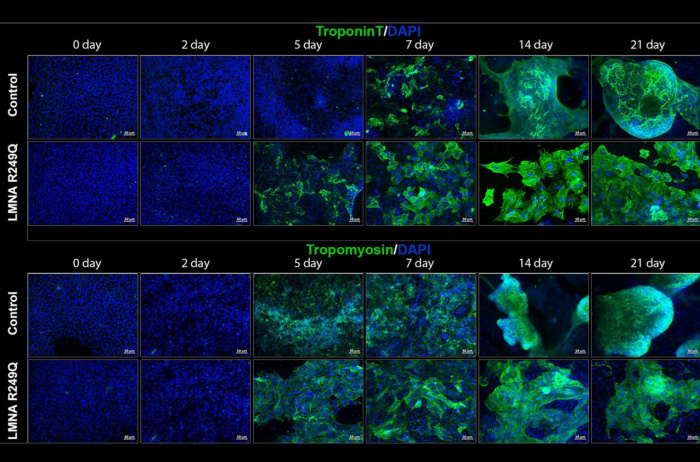
Unveiling the molecular mechanisms behind laminopathies
Scientists at the Research Laboratory of Molecular and Cellular Modeling and Gene Therapy of the WCRC for Personalized Medicine have completed a large part of research on the mechanisms of arrhythmogenesis in severe inherited disorders – laminopathies.
Laminopathies are a group of severe genetic disorders affecting various systems and organs. Laminopathies are one of the frequent causes leading to heart transplantation, and one of the most severe manifestations is the development of ventricular arrhythmias. In this regard, laminopathies became the first genetically determined condition, where the molecular basis of the diagnosis can contribute to the rationale for therapy and change the indications for the implantation of a cardioverter-defibrillator.
Since lamins are components of the nuclear membrane, the mechanism leading to arrhythmogenesis in the diseased state is still not understood. Very little is known about the association of lamin proteins with ion channels that maintain a normal heart rhythm. Using the latest cellular and electrophysiological techniques, specialists of the Research Laboratory of Molecular and Cellular Modeling and Gene Therapy have shown the interaction of lamins and voltage-gated sodium channels. For the first time, sodium channel dysfunctions due to mutations in the lamin genes were discovered.
This is the second worldwide study of sodium channel function in laminopathies using the induced pluripotent cell model. The first one was published in Nature in 2019. Currently, the paper has been accepted for publication, and the projects of the WCRC for Personalized Medicine continue to expand the scope of research into the molecular mechanisms of laminopathies in terms of epigenetic regulation of gene expression and the effect of lamins on various types of cellular differentiation.
04.08.2022
